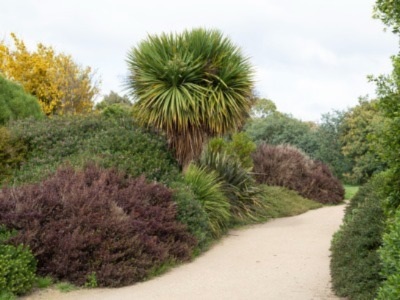
The gardens are located to the east of the Council offices, north of Robertson Street. Pedestrian access is from the bridges over Jacksons Creek on both the Western and Eastern sides of the Gardens. No vehicles are permitted.
The plan for the gardens is based on the former sister city relationship between Gisborne New Zealand and Gisborne Australia.
The gardens are open all year and there are toilet and picnic facilities in adjacent parklands. The gardens are a work in progress and require ongoing funding for completion.
Master plan
In 2017, Council completed a five year master plan for the Gisborne Botanic Gardens, which seeks to attract more visitors and expand the gardens' diverse plant collection and infrastructure.
Plant collections
The southeast corner of the gardens was the first area to be planted in 1992. This area was planted with Cabbage Trees (Cordyline australis) and New Zealand Flax (Phormium tenax). In 1993 a major flood swept away a lot of these plantings.
In 1994, more landscaping was completed including the planting of screening and woodland areas.
Today the garden has representatives of many New Zealand genera, Hebe and Pittosporum to name a few.
Special features
The Maori taonga or treasure called ‘Tanemahuta’ or Lord of the Forest was installed in 1996. He was carved by Derek Lardelli in Gisborne, New Zealand by a piece of whalebone and greenstone representing the water and the land of Aotearoa (New Zealand). Unfortunately the head of the ‘Tanemahuta’ was stolen around the 12 September 2002. Its replacement was created by Simon Lardelli who is the nephew of Derek. Council is reviewing options with regard to its future.
In December 1999, a sculpture entitled ‘Raincatcher’ by sculptor Anton Hasell was installed in the Australian section of the Gardens in New Zealand. ‘Raincatcher’ was a way of saying Thank you for Tanemahuta.
Friends group
The Friends of Gisborne Botanic Gardens Inc was formed in early 1995. People with an interest in the preservation, maintenance and improvement of the gardens are encouraged to join the Friends. If you would like to know more email infogisbotgard@gmail.com.